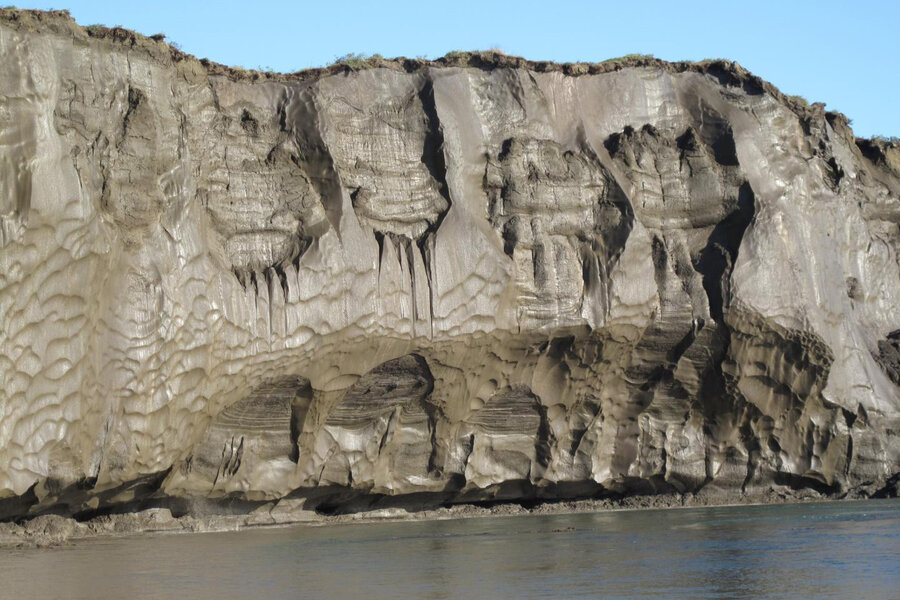Global warming is unlocking carbon stores long-locked in permafrost
Loading...
For thousands of years, a large percentage of the world’s carbon stores have been safely locked in permafrost, the frozen layer of soil and organic matter that covers much of the planet’s northernmost latitudes. But as temperatures rise and some permafrost melts, that carbon is being released into the atmosphere as carbon dioxide at an alarming rate.
For some ancient permafrost, about half its carbon could decompose in just one week after a thaw, according to a new study by the US Geological Survey, which analyzed 35,000-year-old permafrost soils found in Alaska and Siberia known as yedoma.
“It had previously been assumed that permafrost soil carbon this old was already degraded and not susceptible to rapid decomposition upon thaw,” Kim Wickland, the USGS scientist who led the team said in a University of Colorado release.
But that was not the case.
As soon as the yedoma permafrost dissolves, hungry microbes begin to break down the organic carbon and produce carbon dioxide, a potent greenhouse gas.
“What this study adds is that we show what makes permafrost so biodegradable,” said study lead author and Florida State University doctoral student, Travis Drake, in a an FSU release. “Immediately upon thaw, microbes start using the carbon and then it is sent back into the atmosphere.”
And those microbes are voracious. “It’s like feeding them chocolate,” study co-author and FSU professor Robert Spencer said. “You are giving them a food source that they really enjoy and is high in energy.”
With global temperatures climbing, this thaw could have devastating effects.
As more carbon dioxide is released into the atmosphere it will trigger even greater global warming in a hot chain of events.
“Many scientists worldwide are now investigating the complicated potential end results of thawing permafrost,” said study co-author and USGS scientist Rob Striegl in the University of Colorado statement. “There are critical questions to consider, such as: How much of the stored permafrost carbon might thaw in a future climate? Where will it go? And, what are the consequences for our climate and our aquatic ecosystems?”
Some researchers have even put a price on permafrost melt: $43 trillion.
That price tag includes direct and indirect economic impacts of increased warming from these additional greenhouse gas emissions.
“The impacts will be felt around the world,” study co-author Chris Hope told The Christian Science Monitor then. “Thawing permafrost is likely to be one of the major consequences of the changes in the Arctic climate.”
The new USGS study was published Monday in the journal Proceedings of the National Academy of Sciences.








